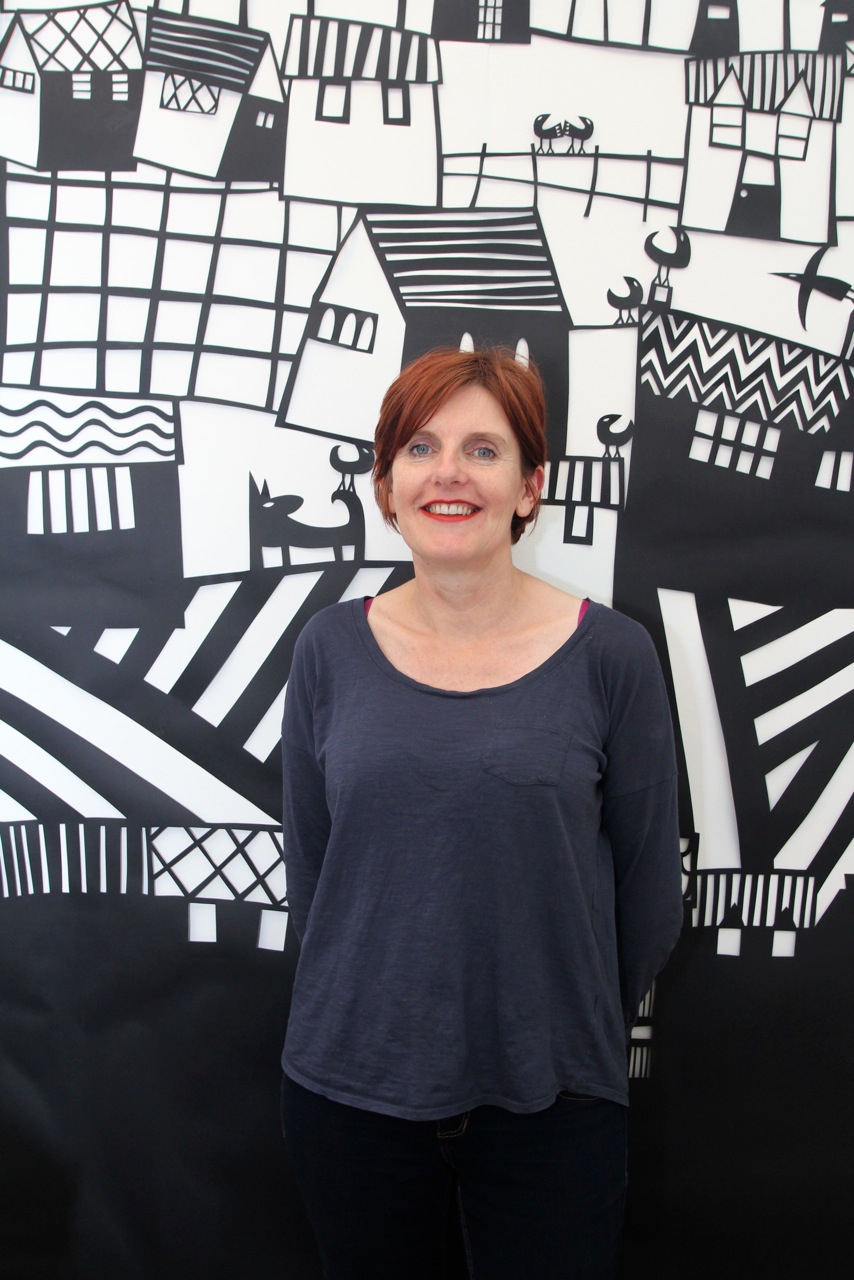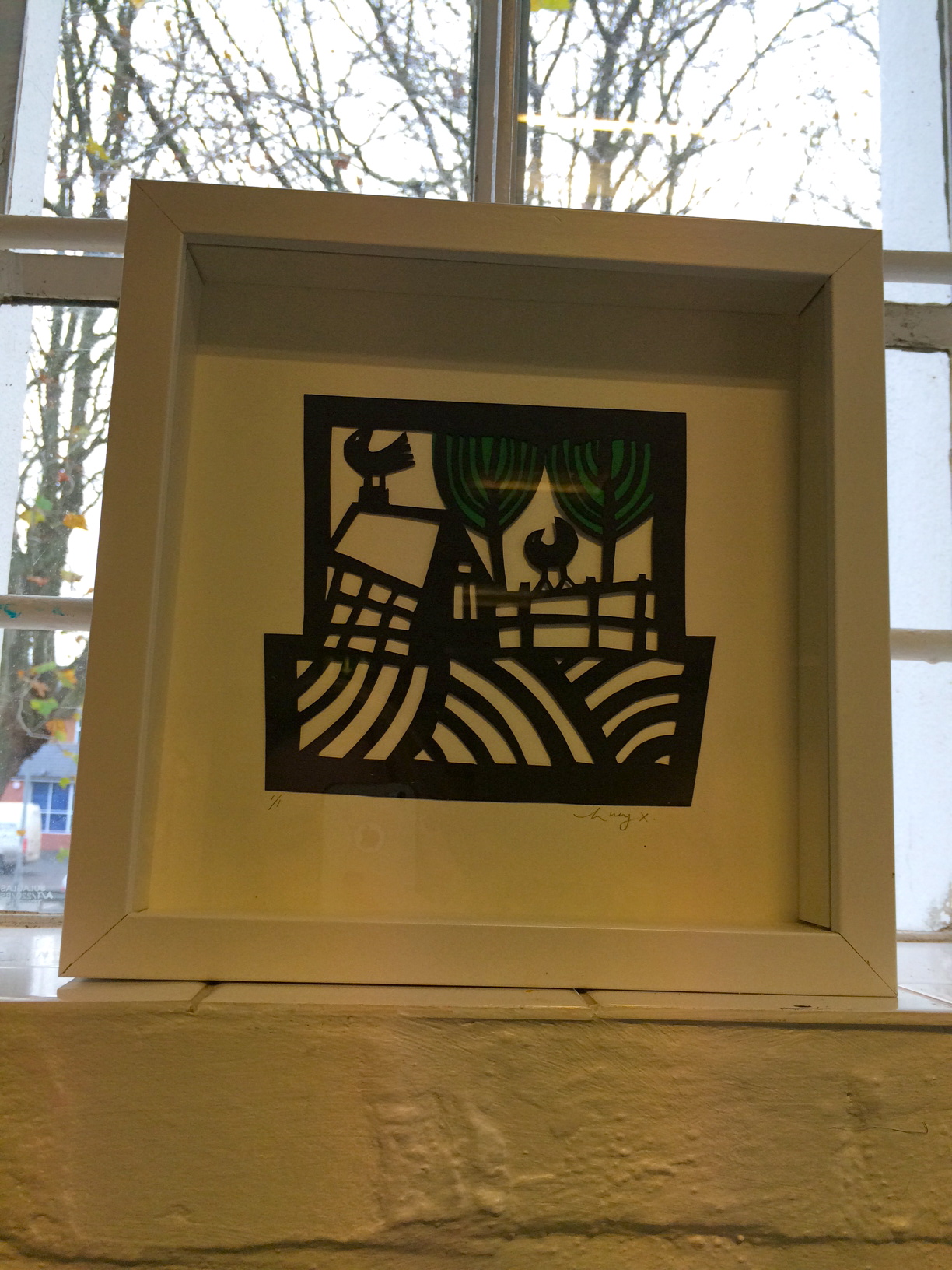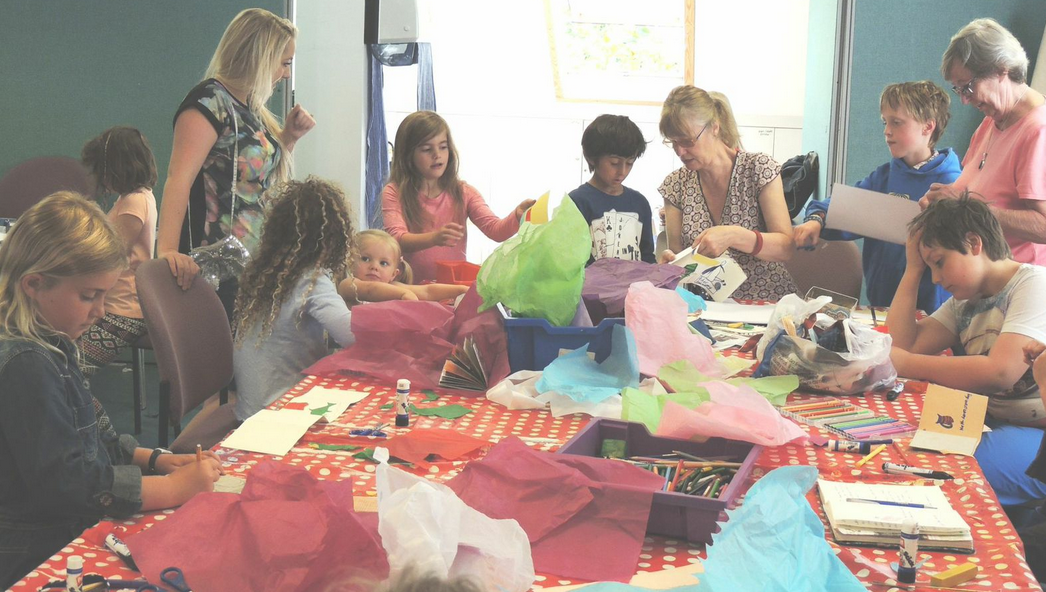Mix up a Saturday, 7 people, a pile of cutting boards, blades and a stack of black paper and you get the most inspired day doing something totally different.
I have just returned from a “Paper-Cutting” course at the Burton Art Gallery, Bideford, with the artist Caroline Rees. Textile design student Caroline Rees has evolved her career as a sandblasted glass artist into a paper cut artist over the last few years and was in Devon to share her deceptively simply technique of making papercuts.
So after the basic introductions, and the amazement that Caroline had travelled from Swansea to Bideford to run the course for us, we set to work practicing cutting out simple squares on a piece of black paper on the chopping mat, using the blade. In no time, most of the class were ready to move onto working on an image. For some, this was hand drawing an outline and being smart enough to work out how to simplify the image and block it out ready for cutting. For the rest of us we found an appealing stencil in Caroline’s collection, outlined the image on black paper and then, almost in a therapeutic trance, cut around the multitude of lines to reveal a stunning image.
For me the appeal of paper cutting is that you don’t need to be an artist, in fact, you don’t even need to be able to draw. The equipment will cost you less than a tenner (cutting board, blade and some paper) and the results are astonishing. All you need is time, actually hours of time, to master the real art of cutting perfect, intricate, tiny shapes. Trust me, I was in awe of the lady working alongside me who was able to cut out weenie circles to make the buds on her flower pattern (SO difficult).
Paper cutting – the beginners’ steps.
1) Purchase a cutting board, blade and black paper.
2) Think about what you want to draw. For me it was tough to sit and really think about what image I wanted to create.
3) Create an outline by hand or from a stencil.
4) Break it down into small parts and work out how each part would need to be cut.
5) Then have fun and start cutting out the image from the smallest parts first. Be patient.
The draw? The desire to learn something new, something frivolous in Bideford.
The attraction? A skill that requires no digitization, just the work of the human hand. And Caroline Rees – like the art of paper cuts, is enchanting.
The result? A huge sense of personal accomplishment as the image emerges from blank piece of paper revealing something I can hang on my kitchen wall with pride! And the relief that I now know what I am going to get everyone for Christmas!
So if you fancy having a go at paper cutting, and you missed this course, there is a small selection of paper cutting books on sale at the Burton Art Gallery shop. But if paper cutting isn’t for you, then Caroline’s limited edition paper cuts are also on sale at the Burton.
For details on upcoming workshops at the Burton Art Gallery visit: www.burtonartgallery.co.uk
Venue Contact Details:
THE BURTON ART GALLERY & MUSEUM, Kingsley Road, Bideford EX39 2QQ
(e) burtonartgallery@torridge.gov.uk (t) 01237 471455 (w) www.burtonartgallery.co.uk
Opening Hours: Monday – Saturday, 10am – 4pm, Sunday 11am – 4pm.
Artist Contact Details:
CAROLINE REES, Studio (by appointment), Ty Glas, 2a Overland Road, Langland, Swansea, SA3 4LS
(e)info@blastedglass.co.uk (t)01792 447 547 (w) www.blastedglass.co.uk
Lucy Goaman





